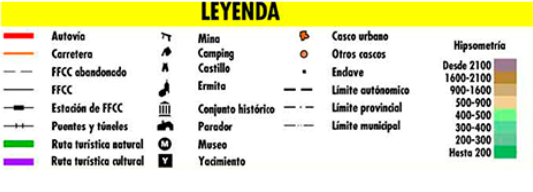
Autumn

Autumn is a time of abundance in the natural park. The heat of the summer fades, displaced by rains and cool breezes, and nature breathes a sigh of relief, filling the land with bounty: peppers, onions, tomatoes and green beans in the vegetable gardens; grapes, walnuts, figs, blackberries and pomegranates on the verges and slopes.
Berries also speckle the mountainsides with all the various shades of red, as the sun slowly draws forth the fruit of the hawthorn, lentisk, terebinth, olive, rosehip and strawberry tree. The winged residents of the park do not allow these gifts of nature to go to waste, consuming as much as possible to prepare for the scarcity of the colder months or the uncertainty of the winter migrations to Africa that some of them will undertake.
The land eagerly swallows the first rains, soon taking on a greenness that resembles a brief second spring. The fruits of the olive groves begin to turn black, heralding the imminent harvest, while yellow-leaved poplar trees mark the serpentine courses of the rivers now swelling with water after the aridity of the summer.
Autumn marks the arrival of vast flocks of starlings that provide a melodic soundtrack to the mornings in towns and villages with a wide repertoire of whistles as they perch on trees and rooftops. Residential areas also welcome back the elegant white wagtail, whilst the countryside is once again home to the goldfinch, known to locals as the colorín. The olive groves afford a generous welcome to many birds fleeing the cold weather of other countries across Europe, such as the chiffchaff, robin and thrush, and the pine woods once again echo to the sound of birdsong as blue tits, finches and goldcrests gather in noisy groups to collectively forage for food.
Squirrels fill their hidden stores in advance with all nature of nuts and berries, particularly the abundant acorns, while badgers gorge themselves to ensure they face the winter with a thick layer of fat.
Rutting Season
Hiking in the Natural Park
The Villages Trail
Mushroom-picking
Transhumance GR 144.
Fighting, chasing does and mating are the main concerns of stags at the onset of autumn. In forest clearings they gather to clash with one another and show off their strength in front of the females and vanquished males: the unmistakable sounds of the bellowing of the stags and the clashing of their antlers resound throughout the valleys of the park. Observing these displays requires respect and discretion to ensure the animals do not feel forced to seek other, more isolated spots. The area around the Tranco reservoir is a good place to hear them, as are the mountains around the village of Onsares, in the municipality of Villarodrigo.
The landscape is aflame with yellows, reds and oranges: it is time for the lush trees to array their branches with colour and cover the ground with their leaves, little by little. Walnut trees, elms, ash, terebinth and maples delight us with their vibrant tones whilst the fruits of many other species of tree become ripe, not only providing colour but also nourishment for the multitude of birds that have migrated from northern Europe to spend winter in the park. The valleys through which the rivers and streams pass are ideal places to go walking in autumn, although it is also extremely gratifying to view the park from on high by taking a flight in a paramotor or paraglider, either alone (for those already versed in the sport) or in tandem.
In the same way that the forests and animals prepare themselves for the hard winter months ahead, the park's residents gather the last fruits of the harvest to make tomato preserves, prepare delicious roasted dishes and create strings of peppers, which decorate the front of their homes. They also gather walnuts, figs and grapes to make aguardiente (literally, "firewater"), a strong spirit that is used to create delicious liquors. The villages of the Zumeta and Segura valleys represent the perfect places to discover more about this activity.
These magical fruits of the soil, which add such flavour to dishes from the region, appear after the first rains, when the temperatures are still mild. A wide variety of mushrooms grow in the park, but the star is the milk-cap (Lactarius deliciosus) or guíscano as it is called by the locals, representing the best known and most prized fungus. It grows under the blankets of pine needles in large stretches of pine forest and it is important to learn the correct way of picking this mushroom. Grilled, served with garlic or as a component of ajo de harina (a thick stew made with flour, garlic and other vegetables), they are a real delicacy.
This route allows walkers to become better acquainted with the tradition of transhumance, the seasonal migration of people and their livestock. Some shepherds still observe this practice every year, travelling with thousands of sheep of the breed endemic to the Segura Mountains. In autumn, the animals are moved from the high mountain pastures, where they graze throughout the summer, to the warmer areas around the mountains of the Sierra Morena. You can choose to follow the route yourself or take part in an organised excursion with the shepherds and their flocks: in recent years specialised companies have began organising walks accompanying the shepherds.



